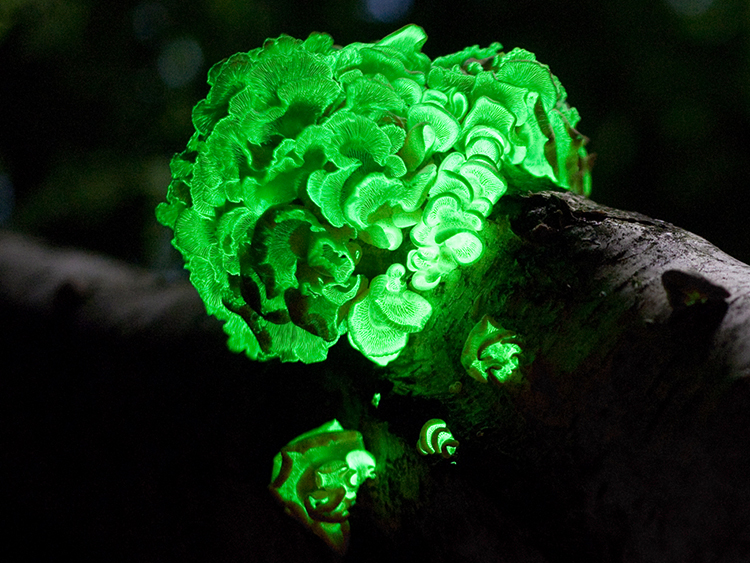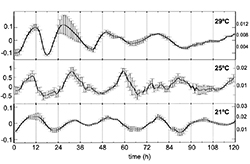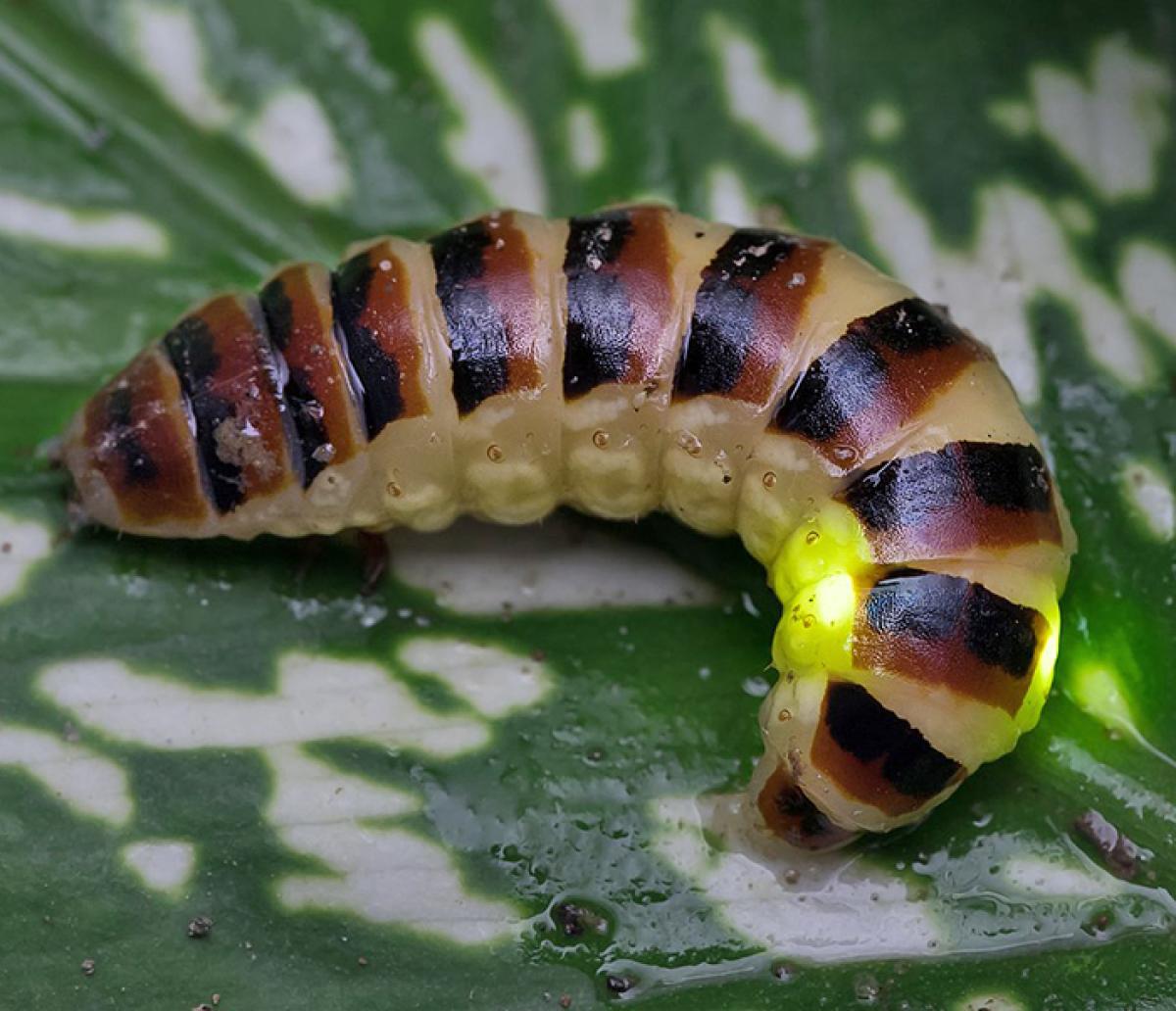
Foxfire's Ghostly Call
What's in the Story?
Night has been arriving earlier recently, as summer is coming to an end. But tonight you've forgotten that. You were playing with your two best friends until the sun touched the horizon, and now it's gotten dark. The fastest way home is through a small forest of waving palms.

As you travel through, you spot an eerie greenish glow coming from a rotten log and from between tangled roots here and there. You run past them and burst through the door to your house, your heart pounding. When you tell everyone what you saw, your old grandfather mutters of will-o'-the-wisps and forest spirits. But you're sure there's more to it.
The next day, you eagerly return back to the forest... but there's nothing there. Just the same old log and trees, a couple mushrooms and thick beds of moss. You have an idea though, and decide to wait till nightfall. And just as you thought, with the disappearance of the light, the mushrooms begin to glow.
But why? Is it some sort of secret signal? And if so, then who could this message possibly be intended for? In the ScienceDirect article "Circadian Control Sheds Light on Fungal Bioluminescence," scientists tried to answer this very question. So… why do some mushrooms make this nightly 'foxfire' light?
A Glowing Allure
When we hear 'bioluminescence', we may think of weird monsters deep in the ocean, or bright fireflies. Their light patterns are often bright and colorful, and these displays change, to send signals or to hide from predators. For example, the firefly squid is covered in blue dots and makes them glow brighter in shallow water. This helps them to blend in with the light from above so that predators looking up don't see them as a black shadow against the surface - a strategy called counter-illumination.

But glowing mushrooms are a same constant greenish blue, appearing at night and dimming during the day. They're more like a slowly increasing light switch than mysterious Morse code. The scientists proposed that this ‘foxfire’ was constant because it was a signal for something that was constantly needed. Similar to how a lighthouse doesn't turn on its beam for just certain ships, the light was meant to alert everyone, especially at night.
Illuminating Time
To test this theory, scientists tried to show that the mushrooms were getting brighter at nighttime on purpose. To do this they chose the Brazilian Flor de Coco (Neonothopanus gardneri) because it gave off the brightest light out of the 74 known glowing species.
Nearly all plants, animals, and fungi (including this mushroom) are born with an internal 'circadian' clock. This clock isn't perfect, but it tries to keep an approximately 24-hour cycle. For example, on average, we finish one round of sleeping and waking every 24 hours. This sleep-wake cycle is a circadian rhythm that follows day and night. However, if we—or other creatures—are exposed to bright white light, the time at which we feel sleepy can be pushed back. This means that, if you were to stare at your lit computer screen for some time in the evening, you'll likely feel like going to bed later and will wake up late.
Most mushrooms work in a similar manner, and are more or less active at certain times of the day. Scientists in this study kept the mushrooms in three separate boxes at 21°C (70°F), 25°C (77°F) and 29°C (84°F). For two days, they trained the mushrooms to keep the regular sleep-wake cycle by having 12 hours of daylight and then 12 hours of night. After this, they were kept only in complete darkness for six days. Their circadian rhythms would have to work hard to estimate how much time had passed - try it yourself, it isn't easy if you have no clues!

And then the poor mushrooms had it even harder. The scientists gave them quick bursts of bright light to test how it would affect their circadian rhythm, and to see at what time they glowed the most. Well, it's safe to say that the mushrooms' clocks weren't fazed. At 25°C the rhythm was maintained at around 22 hours, and the brightness of their glow peaked ten hours after the 'day' vanished.
But what really showed that their luminescence was timed by their internal clock happened after that. Even when the circadian rhythm was 'free running' in total night, the glow always got brighter ten hours after the expected sunset time. So, their internal clocks were controlling when luminescence peaked. They were also timing that peak to normal night time hours even though they were in constant darkness.
Although the mushrooms glowed best at 25°C, the patterns were similar for all three temperatures. The circadian rhythm of the mushrooms wasn't thrown off by the heat or cold. This shows that the clock was compensating its cycle length so that even if it was slightly warmer or colder, the glowing would still happen during the night. (After all, mushrooms aren't usually huddled in strange dark boxes for six days straight, out in nature)
A Shining Scam?
And now the biggest question of all, why the bother? It takes a lot of energy to glow, even if the mushrooms can save some energy by getting dimmer in daylight. Well, there was a clue: most of these mushrooms grew in very dense forests. This meant that there was little wind to help disperse their spores (which is how they get from place to place). The mushrooms needed a carrier. A carrier attracted to light, who could spread future mushrooms to distant lands. Insects!

The researchers set up one final test. They created four fake acrylic mushrooms with the exact shade of green LED light to mimic (or copy) the real mushrooms. To make sure that the light was what made the insects come, they also set up four fake mushrooms that were completely dark. It was a raging hit - the glowing mushrooms attracted over three times as many flies, bugs, wasps, ants, and beetles than the dark fakes during the five test nights.
So the mystery was solved. These mushrooms had evolved the perfect trick. The same eerie green glow once mistaken for ghosts would get insects to knock into them and carry their spores to new places!
Additional images via Wikimedia Commons. Glow worm image by Basile Moran.
Bibliographic details:
- Article: Foxfire's Ghostly Call
- Author(s): Elodie Batt
- Publisher: Arizona State University School of Life Sciences Ask A Biologist
- Site name: ASU - Ask A Biologist
- Date published: 29 Aug, 2023
- Date accessed:
- Link: https://askabiologist.asu.edu/plosable/mushroom-light
APA Style
Elodie Batt. (Tue, 08/29/2023 - 12:15). Foxfire's Ghostly Call. ASU - Ask A Biologist. Retrieved from https://askabiologist.asu.edu/plosable/mushroom-light
Chicago Manual of Style
Elodie Batt. "Foxfire's Ghostly Call". ASU - Ask A Biologist. 29 Aug 2023. https://askabiologist.asu.edu/plosable/mushroom-light
Elodie Batt. "Foxfire's Ghostly Call". ASU - Ask A Biologist. 29 Aug 2023. ASU - Ask A Biologist, Web. https://askabiologist.asu.edu/plosable/mushroom-light
MLA 2017 Style

Bioluminescence is light made by living organisms. It is used as a signal, but it's not always clear what other organism the signal is for. Here, with glow worms, they glow as a warning to predators. Later, as adults, the glow is also used as a mating signal.
Be Part of
Ask A Biologist
By volunteering, or simply sending us feedback on the site. Scientists, teachers, writers, illustrators, and translators are all important to the program. If you are interested in helping with the website we have a Volunteers page to get the process started.
